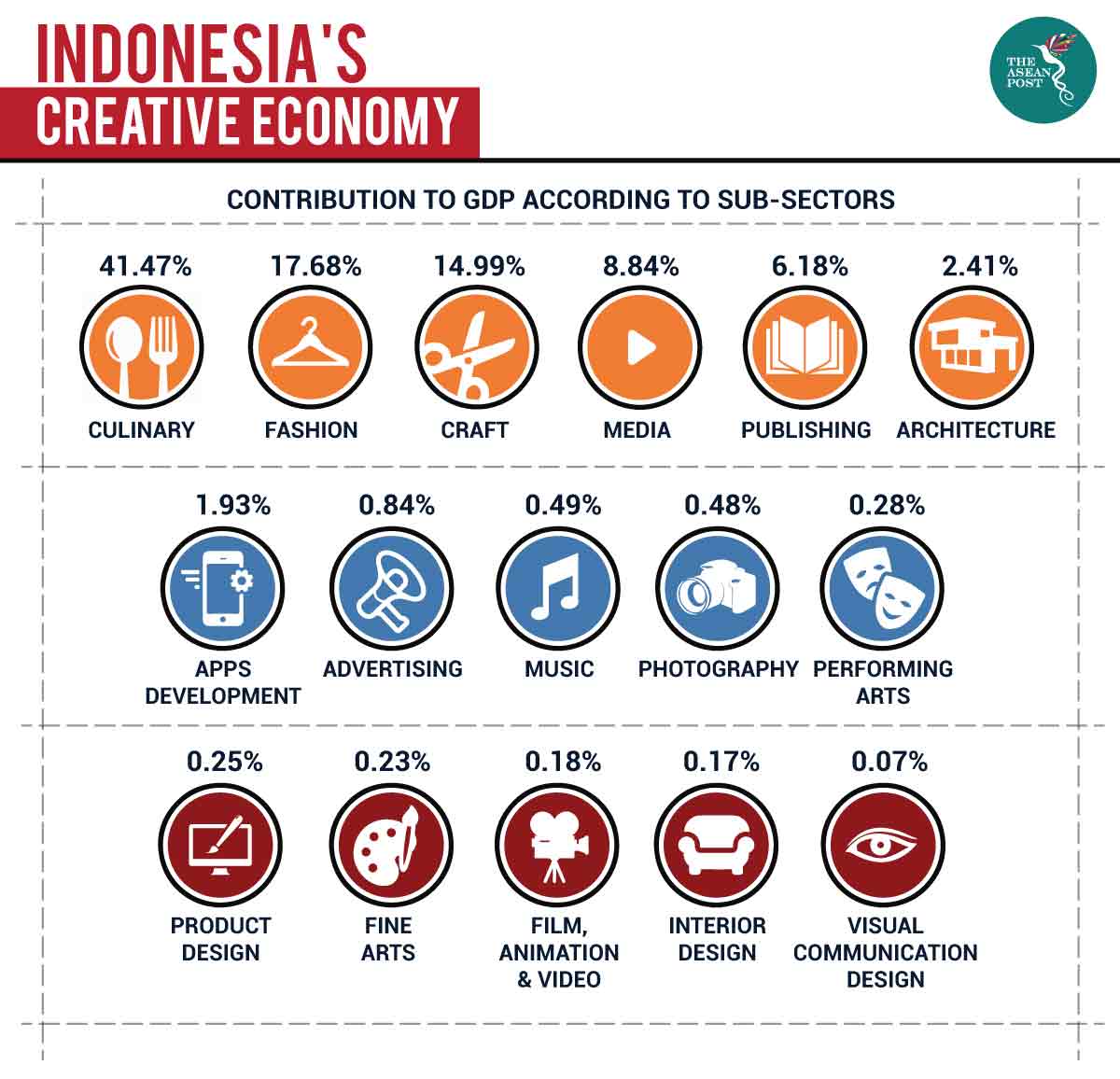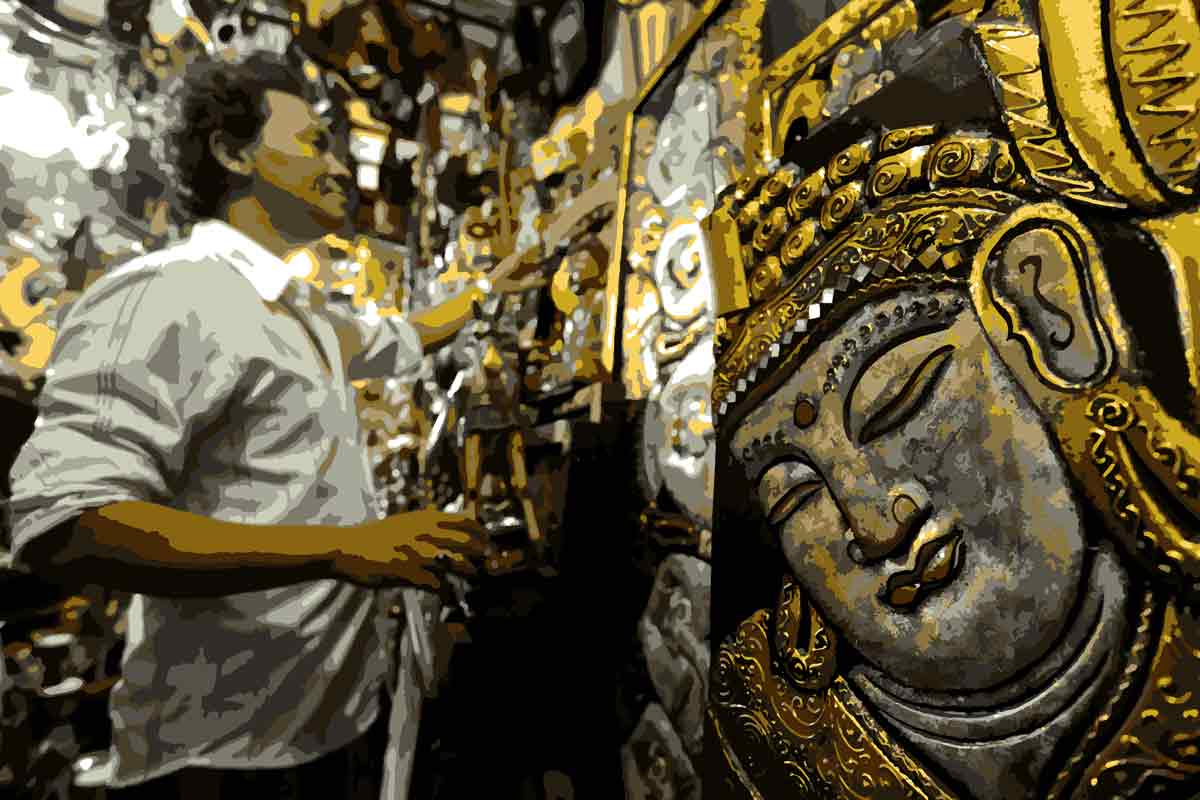Rapid technological transformation is changing the world economy, and along with it, the economic landscapes of ASEAN member states. Wealth creation through human knowledge and creativity is steadily outpacing the wealth creation from natural resources. According to the United Nations Institute for Training and Research (UNITAR), the creative economy is the most dynamic sector of the global economy with a powerful transformative force for socio-economic development.
Driven by creativity, the sector centres on products and services that embody creative content, technologies, cultural values and market objectives. These products rely on ideas, knowledge, skills and at times traditional livelihoods.
Many countries are now recognising the combination of culture and commerce as a powerful strategy to promote themselves. Cultural districts that combine arts and commercial activities are popping up in cities all around the world. According to the World Bank, in 2015, 11 creative sectors’ revenues contributed US$2,250 billion to the global gross domestic product (GDP), growing 15 percent every year.
The strength of a creative economy is based on quality human resources, adopting human experiences, intellect and creativity as its main assets. Artwork, architecture, books, innovative technologies and visual arts are all derived from human knowledge.
‘Bekraf’
Creative industries play an important role in the economy. Patrick Cooke, Regional Editor for Asia at the Oxford Business Group sees Indonesia as well-positioned for the creative economy. He relayed that the country has the advantage of a large, consumption-driven internal market to support the growth of its creative sector.
The administration of President Joko ‘Jokowi’ Widodo recognised in 2015 the potential of the country’s creative industries to boost domestic consumption and to increase foreign exchange earnings. The administration then mandated the establishment of the Creative Economy Agency (Bekraf) with the task of nurturing the growth of the creative sector, while slowly weaning off the reliance on commodities. The target is to establish Indonesia as a global creative economy player by 2030.

According to Bekraf, Indonesia’s creative industry contributed 7.4 percent to the country’s GDP. Triawan Munaf, Head of Bekraf said that Indonesia’s creative sector has been growing positively every year. In 2017, the creative economy contributed US$71.8 million to the country’s GDP, increasing slightly in 2018 to US$78.9 million. In 2019, the number is expected to increase 9.6 percent from the previous year to US$86.9 million. The sector also accounts for 14.3 percent of Indonesia’s workforce.
Bekraf also plays a role in matching creative companies to investors, similar to the assistance given to food start-up company, Matchamu, that was able to set up a factory in Yogyakarta, after getting investors. Last year, Bekraf organised the first World Conference on Creative Economy (WCCE2018) in Bali under the theme ‘Inclusive Creativity,’ to promote the creative economy as a driver for inclusive and equal opportunities.
The creative economy in Indonesia has the potential to grow due to various factors, including government offered opportunities for the industry’s development, the ever-growing middle-class population and the large consumer market for creative products.
Islamuddin Rusmin Reka, Executive Director of Marketing at Bekraf, said that “the creative economy industry in the future will be one of the driving forces for the Indonesian economy amid the global economic slowdown.” He also added the emergence of the millennial generation as a contributing factor to driving economic growth.
Creativity’s future
Bekraf has called on the government to intensify efforts to boost exports of creative products as the country is reaping the full potential of its creative economy. The agency has organised festivals and trade shows to promote the country’s creative products with potential for export. Triawan said the agency has revised its export target to eight percent higher, from US$20 billion in 2018 to US$21.8 billion in 2019. However, he noted that productivity and distribution are key for producers to meet a large export demand, citing that some producers were not ready to deliver products to 300 million middle-class consumers from China.
Based on data by Bekraf and the Central Bureau of Statistics (BPS), Indonesia’s creative industry still faces hard challenges ahead due to financial strains. The data states that in 2017, around 92.4 percent of industry players were self-funded and did not receive outside funding either through bank loans or fintech assistance.
Darmin Nasution, Coordinating Economic Affairs Minister, said that honing creativity through the development of human resource is essential. “Creative economy is becoming increasingly important by making people as subjects and not objects,” he said. In addition to human resource, Nasution also said that the ecosystem is another crucial factor. Ecosystems are needed to market creative products, highlighting also the need for inter-agency cooperation and collaboration.
More Indonesians are spending on creative economy products – from entertainment such as movies and music to unique handicrafts, useful mobile apps, trending food and many more – creating an encouraging market for creative industry. However, Haris Munandar, Secretary General at the Ministry of Industry noted that technology is one of the more challenging domains to develop in the creative economy.
The creative industry has the potential to generate valuable, dignified jobs in an era of rapid industrial automation. But unlocking the full potential of the creative economy will be a challenge for Indonesia.
Related articles:
